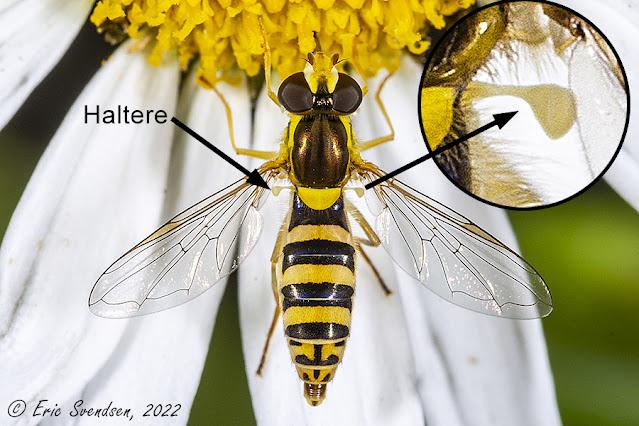What is a haltere?
 |
| Flower fly on daisy. Notice the pair of halteres (the inset is an enlargement). |
Flies fly, and remarkably well. They are fast, agile, and have amazing acceleration. If you have ever tried to swat a fly, yet were unsuccessful, you know what I mean. Much of that innate ability can be ascribed to the haltere.
Most insects have 4 wings, not that it appears that way. Beetles have their front pair of wings adapted as hard covers over the rear pair and usually everything behind their head. These are called elytra and are the primary reason why beetles are some of the most successful creatures on Earth. Yet they are slow, cumbersome fliers. Flies also have one pair of wings, the front ones, while the rear pair have been adapted into two stick-like organs called halteres.
The halteres are sensory and balance organs. When flying, the halteres vibrate at the same frequency as the wings and, for flower flies (above photo), do so in opposing wing positions. Other flies vibrate them synchronously to wing beat or their position may have nothing to do with wing position. It seems to be specific to fly genera.
So, what does a haltere do? There is still research going on regarding this question, but the main answer has to do with detecting changes in position and movement. Remove halteres from a fly and it can no longer become airborne. There is a curious relationship between halteres and walking in many flies. For example, some species can walk on horizontal surfaces but not vertical ones if halteres are removed.
Halteres are only found in the order Diptera (two-winged flies). They are a unique organ in the insect world and are responsible for the flies' agility and spacial awareness in flight. They are amazing structures.
Thanks for reading.
Eric Svendsen www.ericspix.com



Comments
Post a Comment